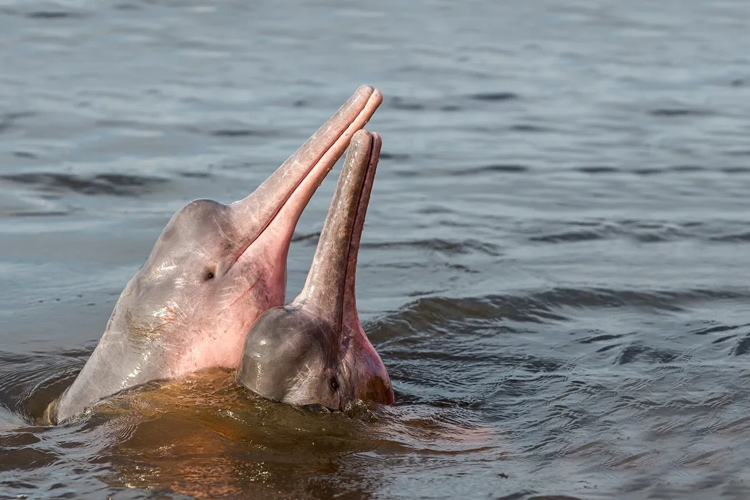By SURIAUNNA BIRMINGHAM
Sheridan High School Student
 The Sheridan Student Column is brought to readers by Sheridan High School’s 10th grade English class, taught by Abby Williams.
The Sheridan Student Column is brought to readers by Sheridan High School’s 10th grade English class, taught by Abby Williams.
These are also called Bottlenose dolphins.
What little people know is that there is a pink dolphin (officially known as Botos) in the South American rivers like the Amazon. These 400-pound animals may sound pleasant, but their behavior says otherwise, although they are not temperamental toward humans as they are with each other. It’s a way to establish their pecking order. Their bites and attacks can injure or even become fatal for the dolphins. Consequently, the scar tissue from these injuries turn pink.
Similar to their relatives, the Bottlenose dolphin, this is mainly to attract females. The only difference is that the scar tissue from Bottlenose dolphins doesn’t turn pink. But the pink dolphin females find the pinker the dolphin, the more they are attracted to it.
The pink and gray dolphin breeds have a lot of similarities. For one, they both give live births. This automatically puts them in the mammal classification. It is important to note that they are not only pink, but also white and can even be blue. They’re born gray and turn a pinkish color when they are adults. The blue variation can come from their diet or other unknown reasons.

Photo provided
As far as their normal diet, these dolphins eat consistently anything that swims. This could be from fish to turtles. According to AmazonExperience.net, they both have free-floating spines. This means that they don’t have any ligaments holding their spine pieces together. Since pink dolphins are in a confined area compared to other breeds, they are built for agility. Their permeable spines are conditioned for this. Bottlenose dolphins have to catch fish in a bigger area, so free-floating spines are a need.
Contrary to the similarities between these two subspecies, there are many differences. For one, marine dolphins are built for speed while freshwater dolphins are agile. While gray Bottlenose dolphins only weigh 90 pounds, pink dolphins can weigh up to 400 pounds and grow to nine feet long. According to Ecuador and Galapagos, there is a myth that pink dolphins are blind, but this has been debunked. They actually have impeccable eyesight due to the amount of light available in their environment.
According to itis.gov, the taxonomy of pink dolphins goes in order from kingdom, phylum, class, order, family, genus, species, subspecies. This would be Anamelia, Chordata, Mammalia, Cetacea, Odontica, Delphinidae, Turisipoes, Truncatus, Inia Geoffrensis. The only difference between the Bottlenose dolphin and the pink dolphin is the subspecies.

